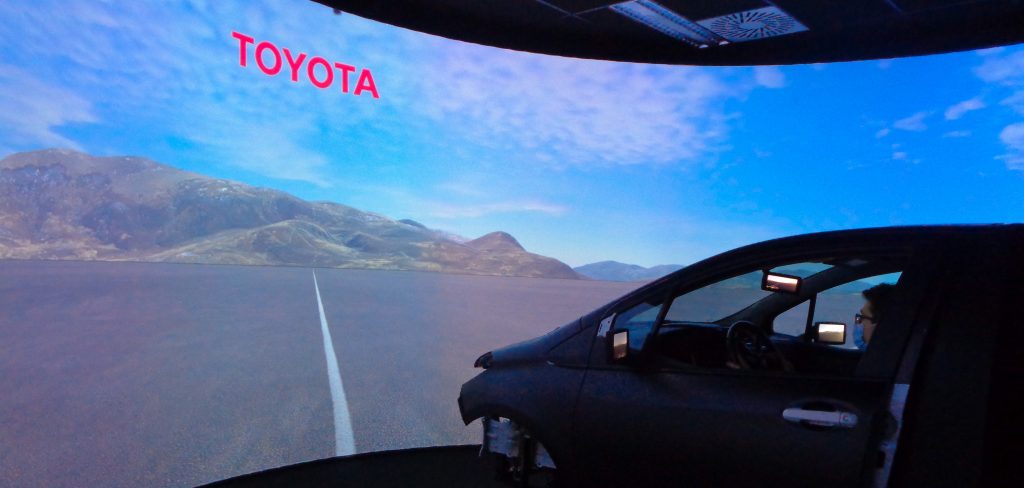Toyota’s European arm, Toyota Motor Europe, says it has adopted software from specialist rFpro for its new simulation center in Brussels. The software will be used across two driving simulators and an image projection system, as part of a dedicated simulator cell with a wraparound screen and five LED projectors.
“Our platforms are global but vehicles are adapted for individual regional market preferences, such as variations in steering feel,” explained Xabier Carrera, manager, model-based development and driving simulation at Toyota Motor Europe. “Through simulation, we can map the entire steering performance using digital prototypes. Our new system combines high-fidelity simulation models with the most realistic imaging possible, in order to trigger driver responses that correspond fully with their reactions in real-life situations. Achieving this requires the driver to be completely immersed in the test scenario, so we selected rFpro because its image quality and refresh rate is the best available. The software also allows legacy models to be incorporated into the simulation, eliminating repetition and reducing cost.”
rFpro notes that its driving simulation software is complemented by an extensive library of accurate digital twin models covering a wide variety of public roads in Europe, North America and Japan. This enables virtual development to take place on and in a range of varying road types and markets, and crucially within real worlds that TME’s engineers can physically visit too, ensuring high levels of correlation between their virtual and physical tests.
Alongside their common role in dynamics development, driving simulators are performing an increasing role in the development and validation of features such as ADAS, as more vehicles are equipped with driver assistance systems. This requires a simulation that is just as convincing to the vehicle sensors as to a human driver, according to Carrera.
He said, “The level of accuracy achieved replicating the real world in simulation by rFpro enables the various cameras and sensors used in autonomous and driver assist systems to react as they would in a physical environment, and means the test results are completely representative.”


